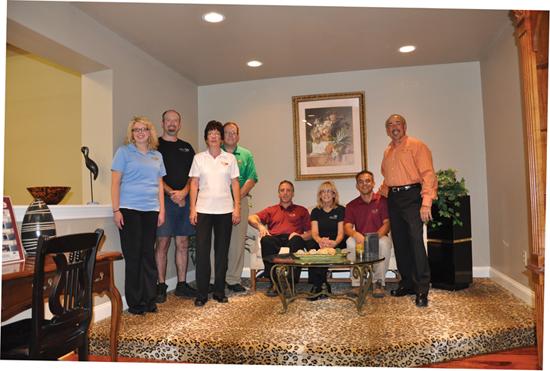Best Practices - November 2010
By Sonya Jennings
Crest Wholesale Carpet & Flooring opened in 1952, but its owner Steve Weisberg has a fresh idea to help customers see his store’s products in a new way. The visual reality center concept is one that he has dreamed of creating for years, and he is now seeing his dream realized. This will change the way flooring is presented and sold in his store and possibly in other forward thinking stores as well.
The idea for the visual reality center originated over a decade ago when the store ordered a large amount of Queen carpet. The product was a bit ahead of its time and was not selling. A small space was carved out in the warehouse to showcase the new product in a room scene. The space was called the visual reality room. When clients saw the product on the floor, in a room scene, it sold like wildfire. At that time, Weisberg told himself, “If I could, I would make an entire warehouse of these rooms in order to allow the customer to see the carpet in a room.”
Years went by, and as the economy slid further into recession, new ideas were needed to spark business. Weisberg remembered his original idea. In the company’s main warehouse, a large portion of space had been filled with rolls for the builder business. With the builder business at a standstill, this area was designated as the spot for the new visual reality center. An interior designer was consulted to help decide how the warehouse should be set up to best highlight the products. Sixteen vignettes were constructed around the perimeter of the warehouse. Each vignette houses a room scene with a different product on the floor; 15 vignettes feature carpet and one features hardwood. In the middle of the warehouse, a flat screen television rolls footage of the rooms, old and new commercials, and tips for choosing flooring and decorating space.
Weisberg sees the visual reality center as a tool for selling similar to a mannequin in a clothing store. He comments, “When a person sees an outfit on a mannequin, no matter how many clothes are on racks or in stacks around the store, she can visualize the outfit on her.” The visual reality center provides the same assurance that the carpet looks good in a real setting. It takes the guess work out of imagining what the product will look like on the floor of a real home.
Crest Wholesale Carpet & Flooring invests approximately 5% of its sales in advertising. Weisberg frequently appears in the company’s television commercials and has for many years. His commercials run on four different cable channels and local television channels as well. The tag line for the company is repeated in all forms of advertising, “No Sale Beats Wholesale.” Another theme repeated in the company’s advertising is, “Make your next flooring purchase your BEST flooring purchase.” Stores like Empire Today and Home Depot are the company’s main competition, and Crest Wholesale combats the perception that these stores offer greater value by creating special offers. For instance, Crest Wholesale offers product bundles of area rugs and carpet.
Most employees at Crest Wholesale Carpet and Flooring have been with the company for many years. Weisberg comments, “It says a lot about our store to have a team with so many long term employees. We are a family.” On a wall of the store, there is a picture of each team member with their start date. The general manager has been employed with Crest Wholesale for 33 years. More than half of the employees have been with the store for over 20 years. Having this information on the wall allows customers to realize that the employees in the store are true experts.
In 1952, Weisberg’s father started the company under the name Crown Floor Covering. In 1975, Weisberg took over the company. The business is now 75% residential and 25% corporate commercial and new builder. Crest Wholesale offers carpet, vinyl, LVT, hardwood, laminate and area rugs. Carpet accounts for 70% of the store’s business.
Copyright 2010 Floor Focus
